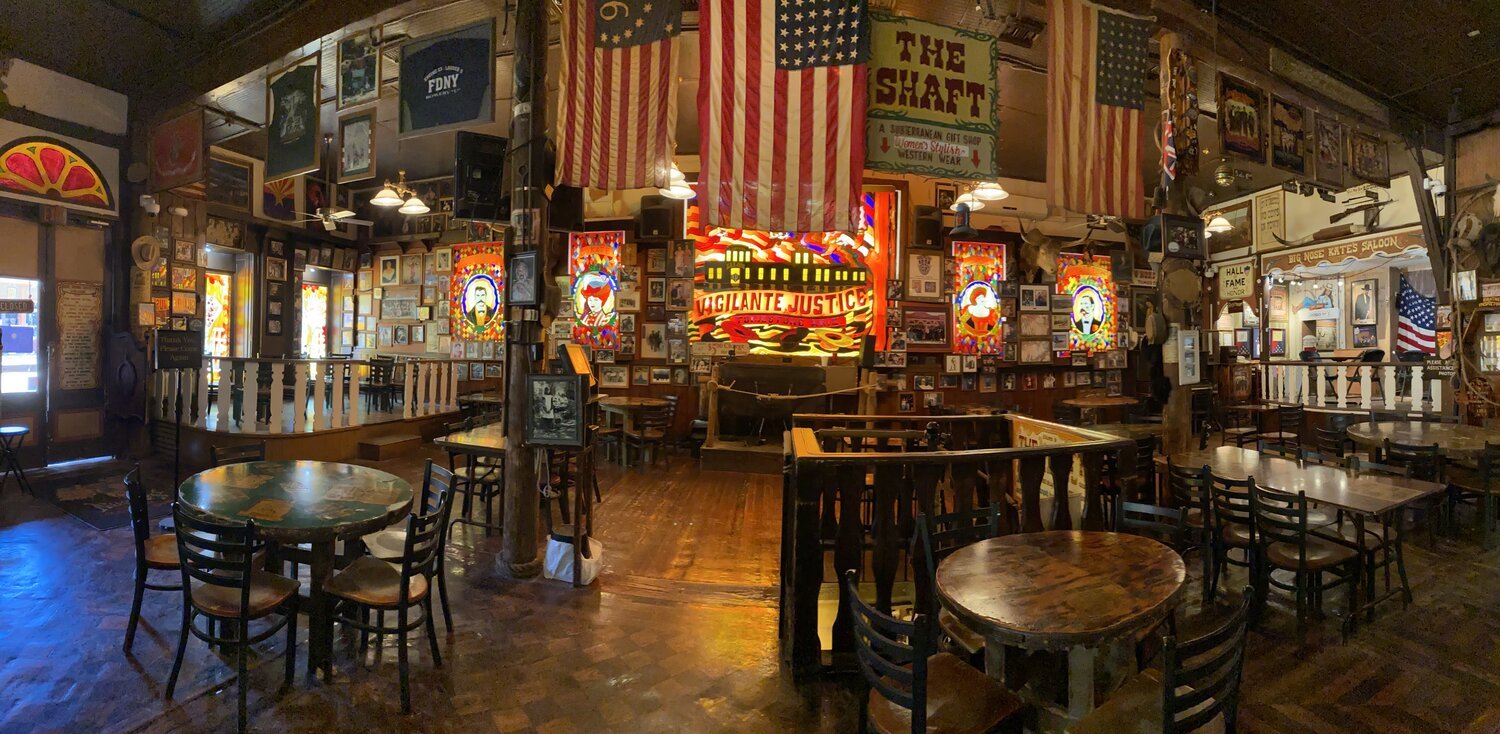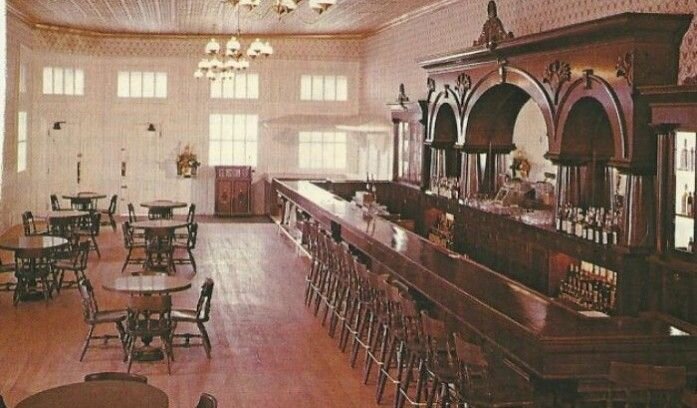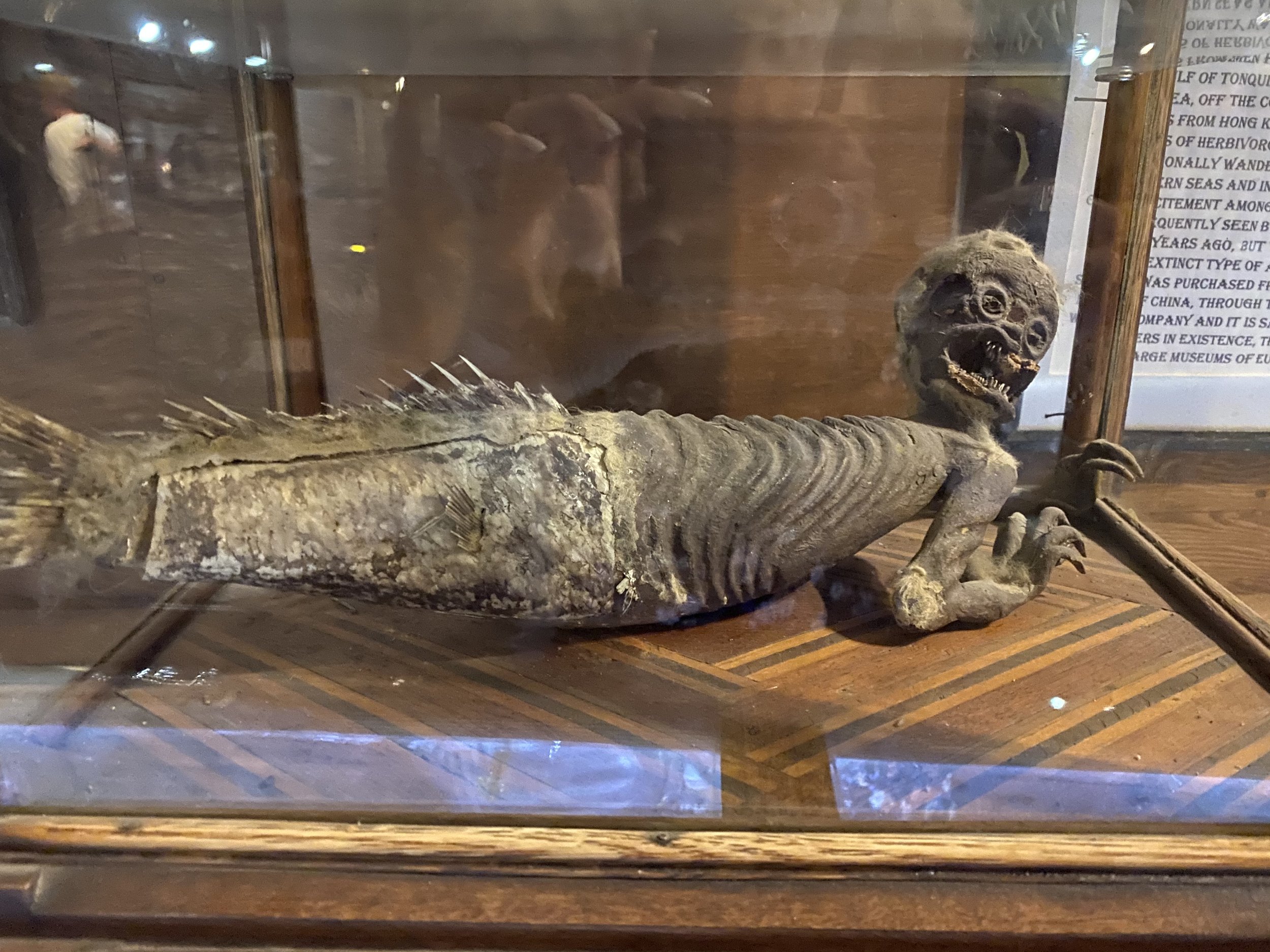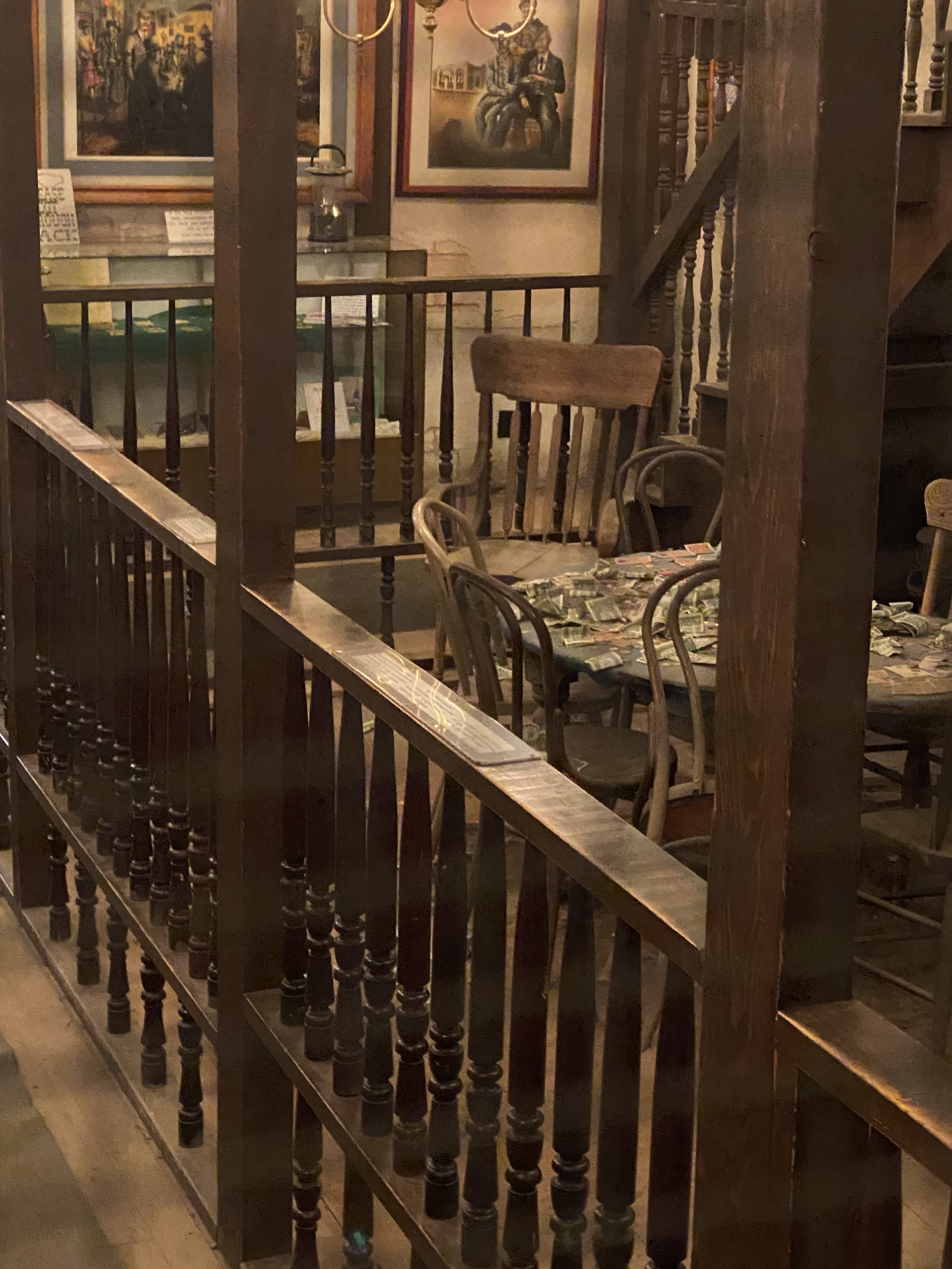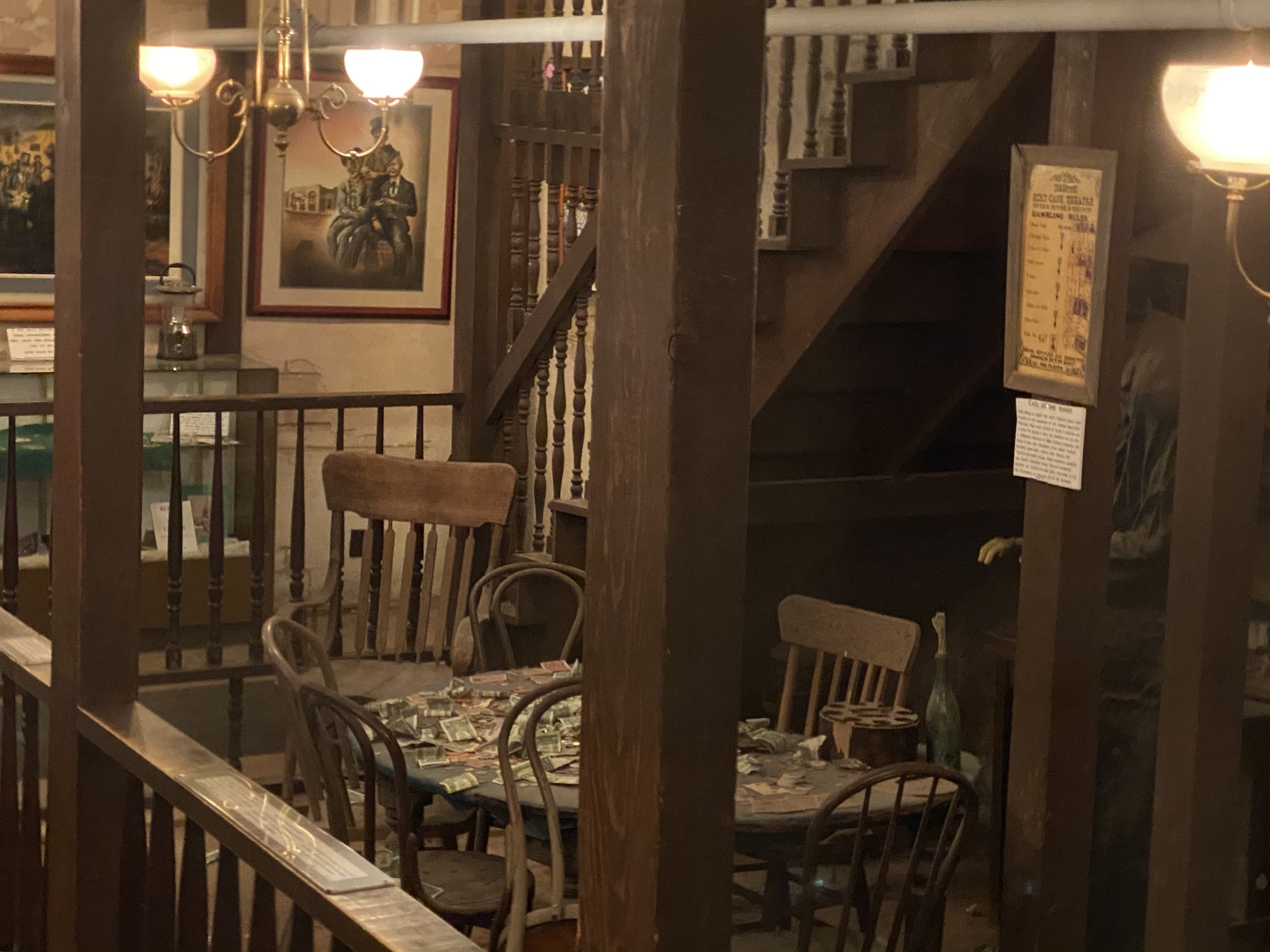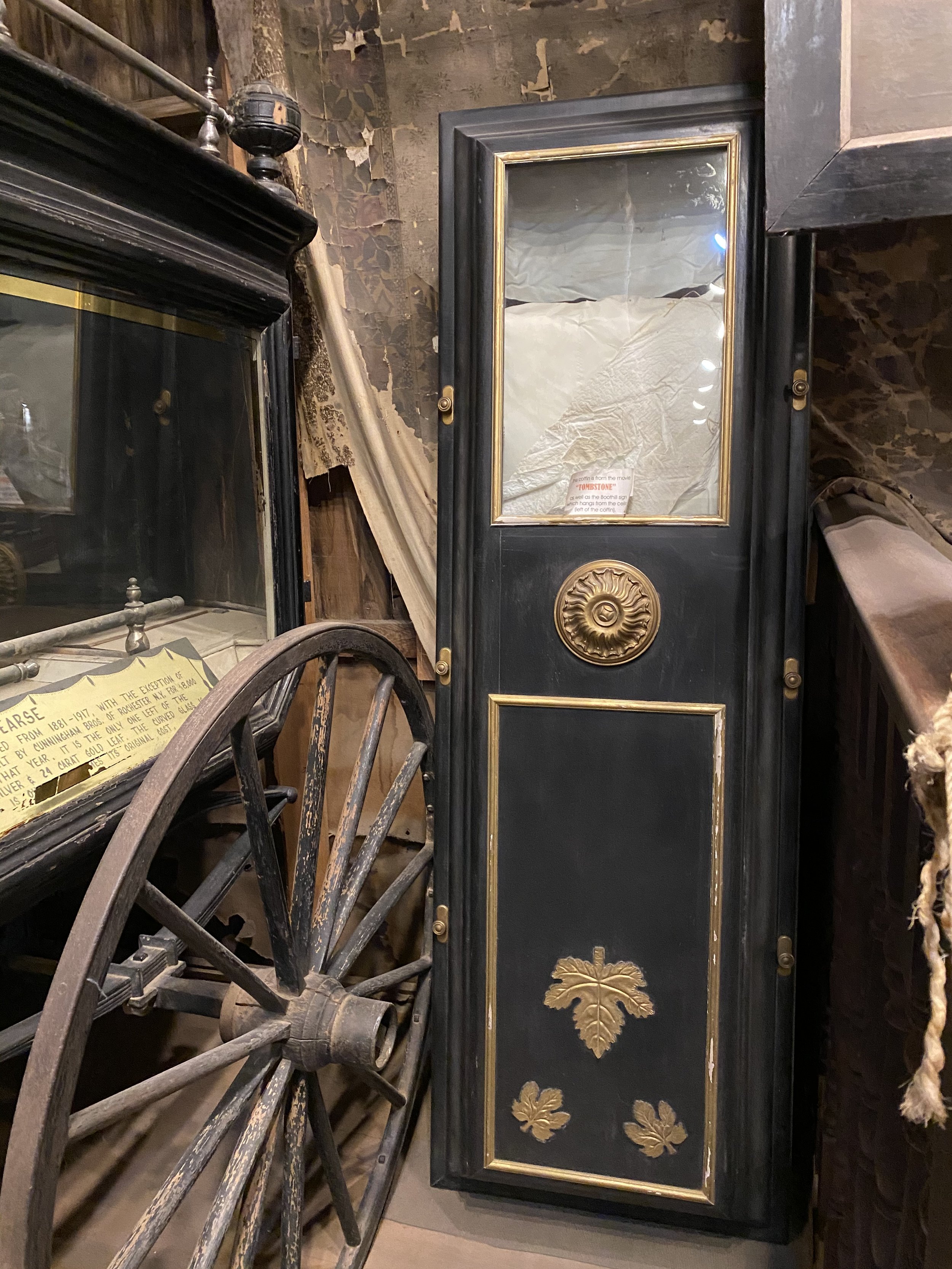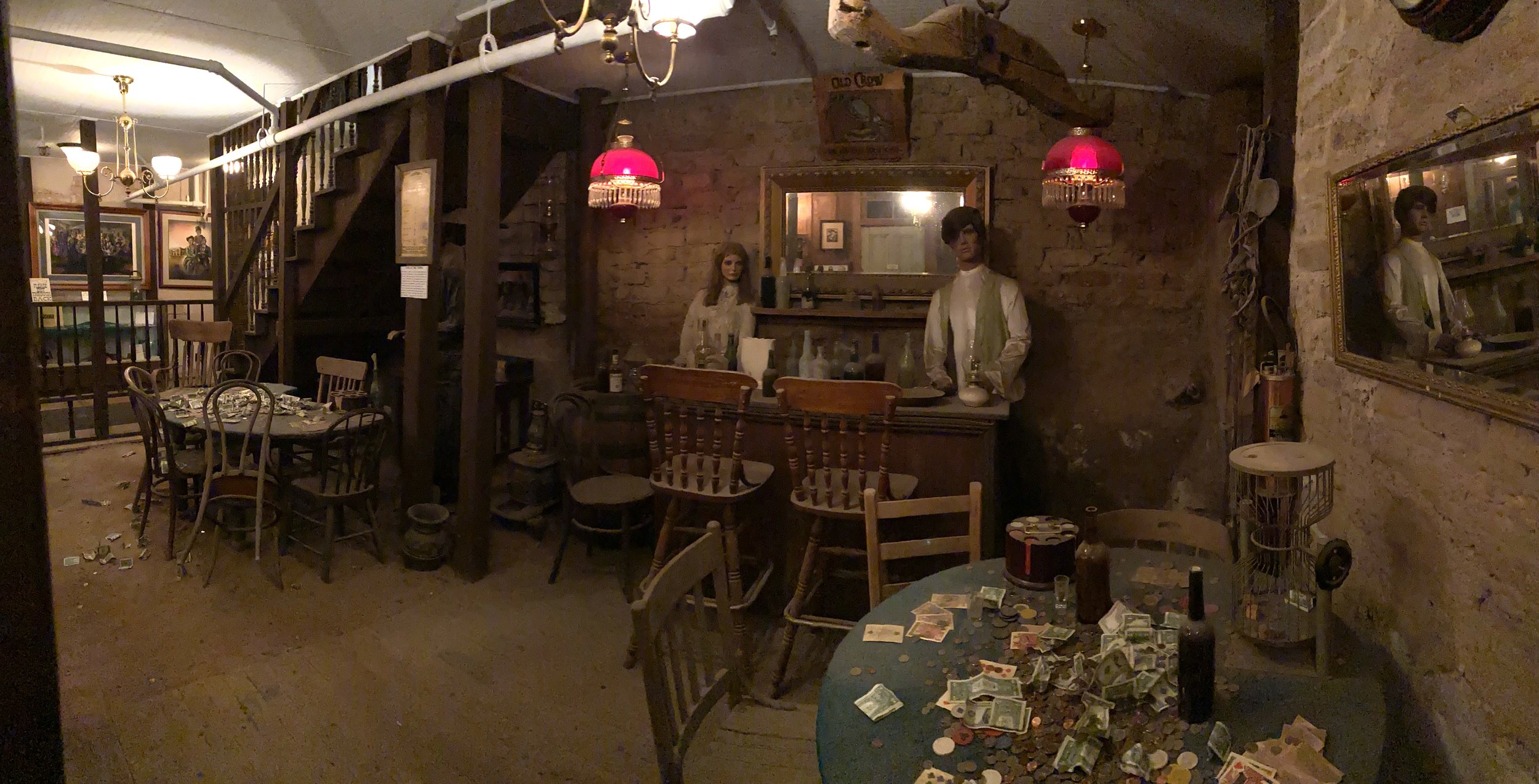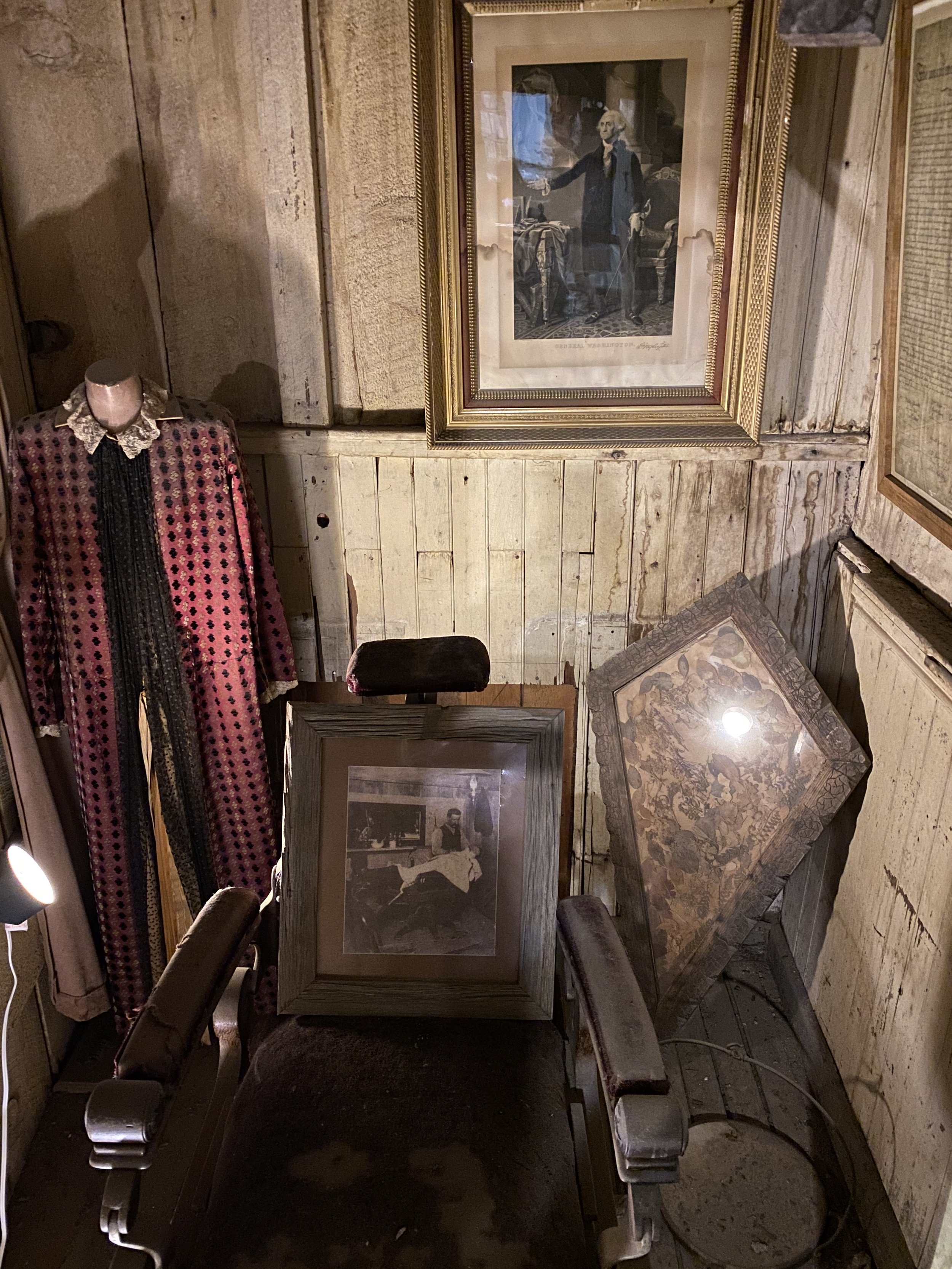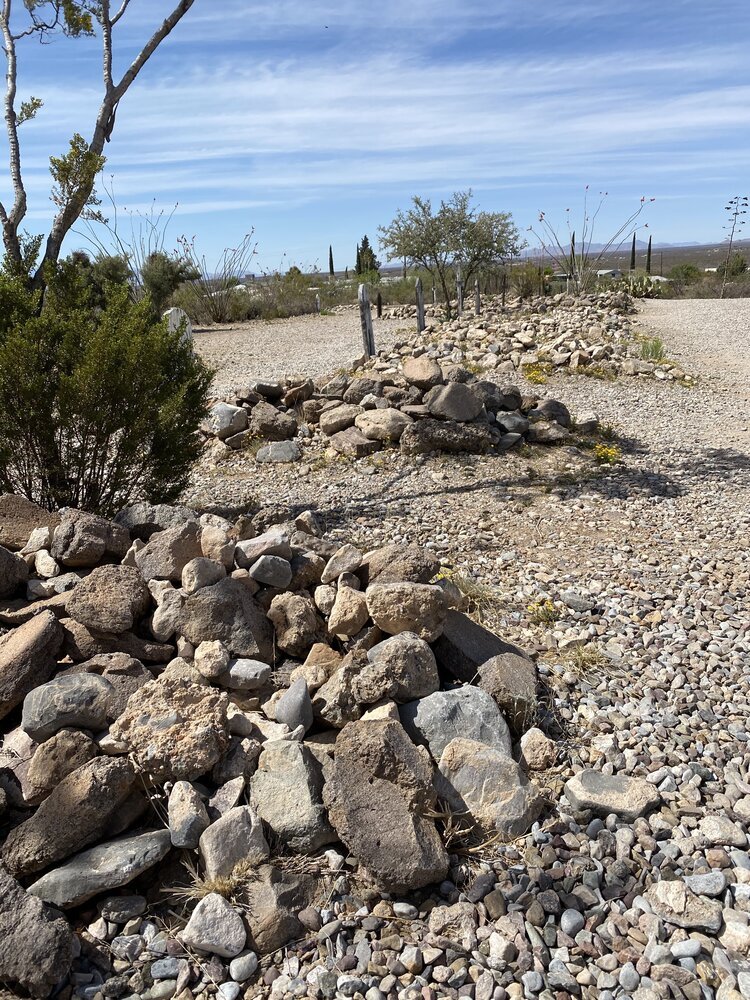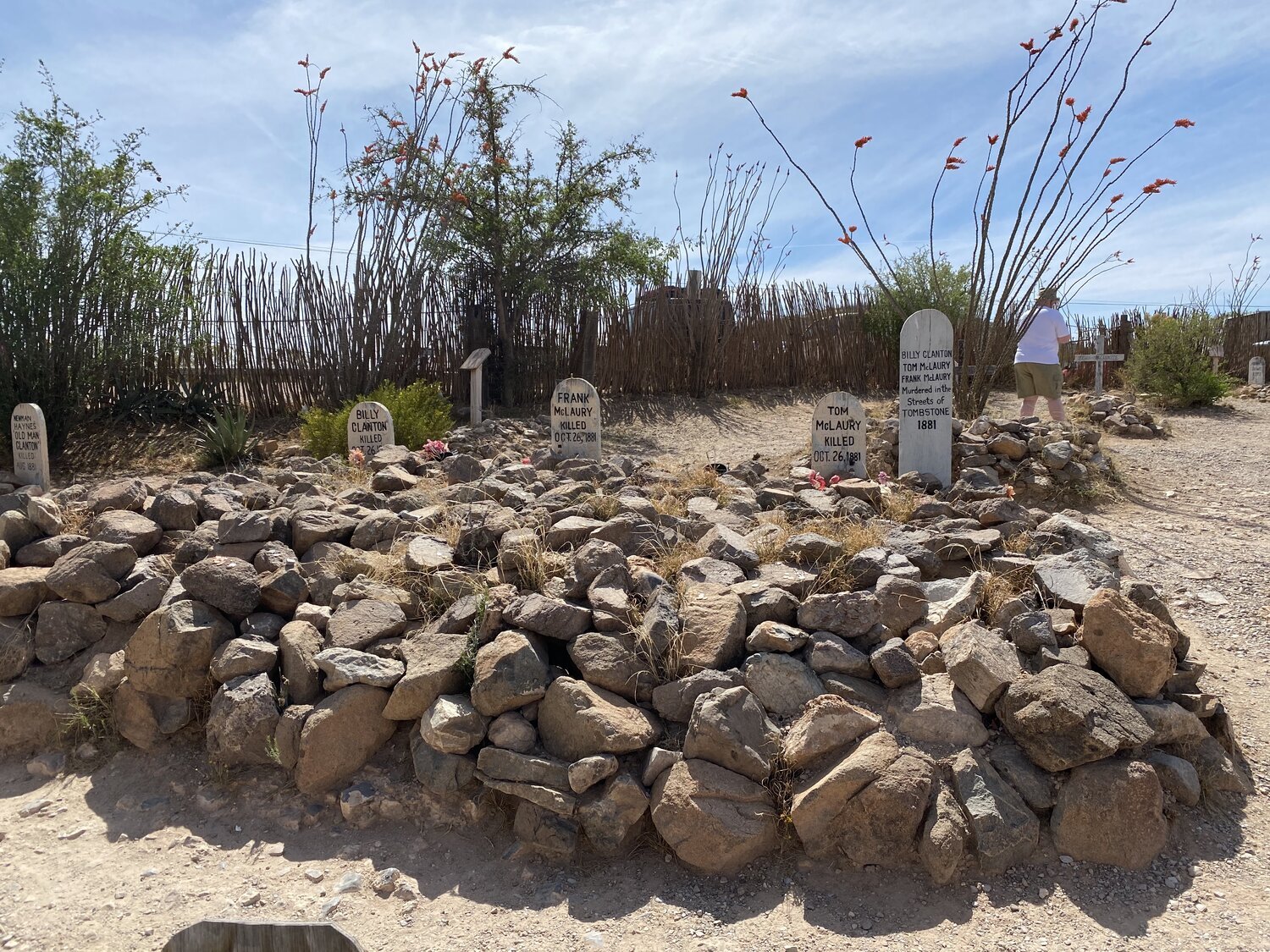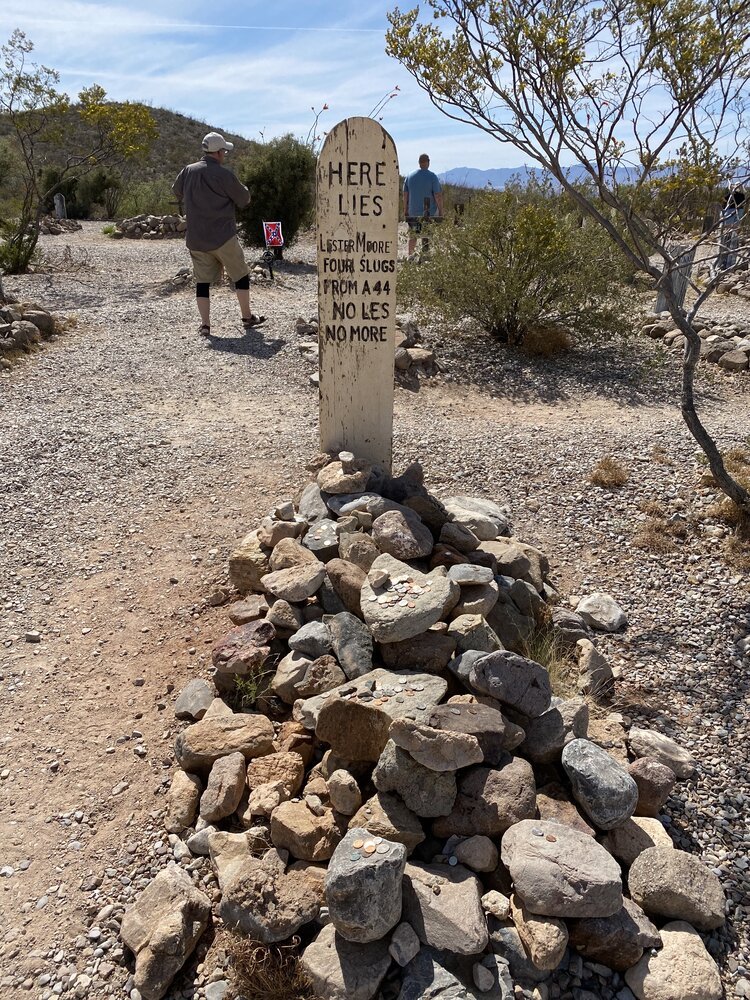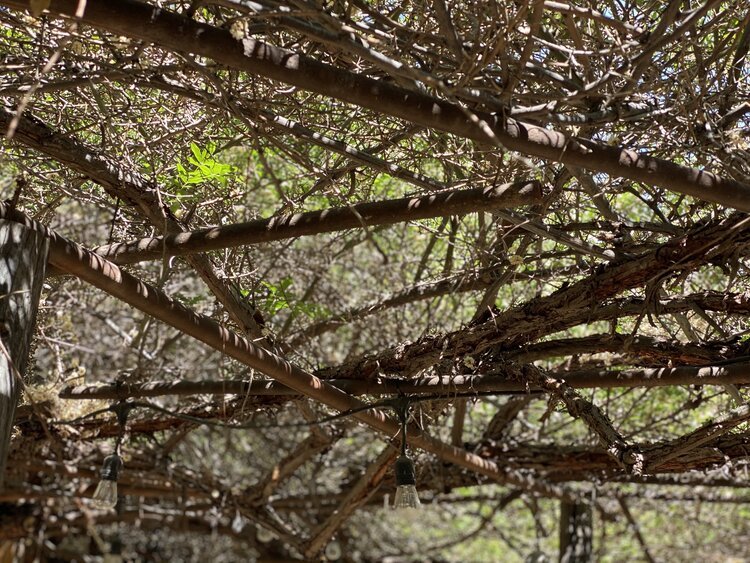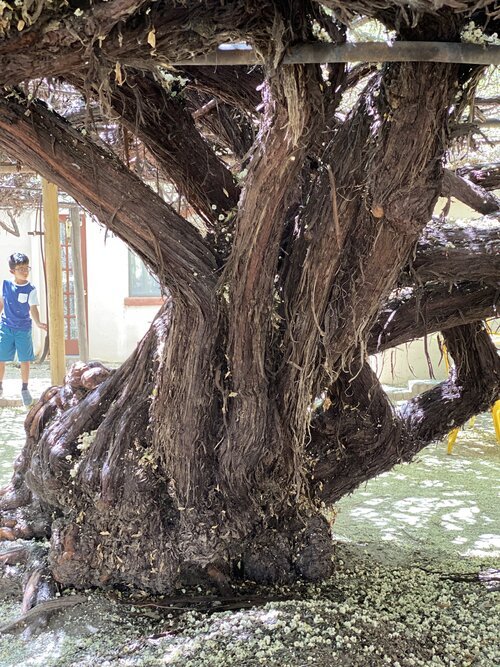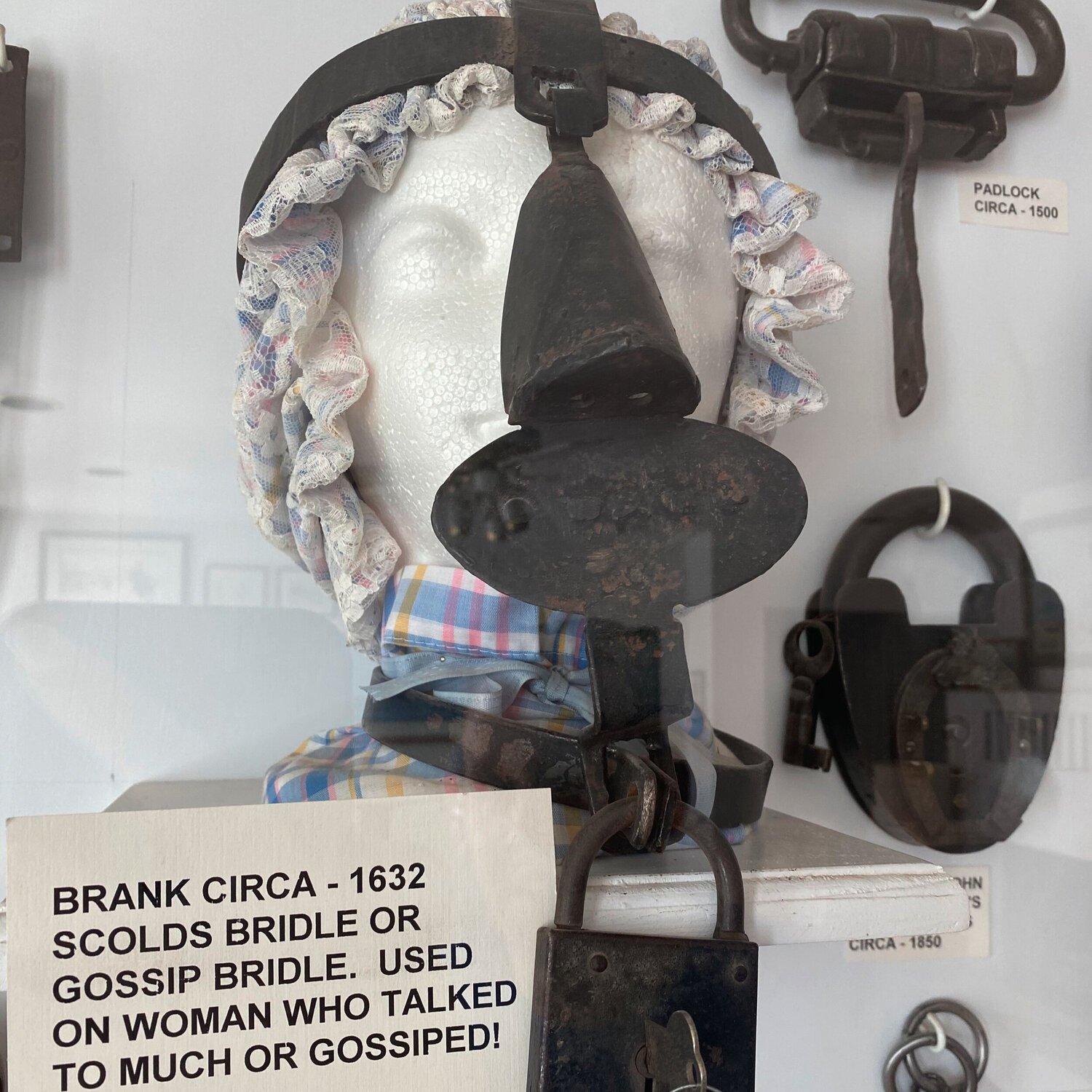Exploring Tombstone, AZ
Time needed in this town: 1 day
If you have never seen the movie Tombstone, it’s about real-life retired “lawmaker” Wyatt Earp, his brother, and famed gambler/pharmacist/deputy, Doc Holliday, who moved to Tombstone to settle down and plant roots, in what was considered a cosmopolitan mining town. Unfortunately, Wyatt was “forced” out of retirement to take on a band of cowboys (the Clanton and McLaury brothers), which resulted in the infamous O.K. Corral gun fight. (If that was the most vague description you could have read, it was on purpose - go watch the movie!) To learn about this in history books was “whatever” when I was a kid, to watch the movie was cool, but to see it in person… WOW!
The below information is a complete guide of the best places to stay, the top places to dine and drink, and all there is to see and do. We’ve also included a summary of the history of this wild west town!
Jump To:
Where to Stay
Where to Dine & Drink
Big Nose Kate Saloon was once The Grand Hotel in 1880, and it was considered one of the finest hotels in the state with many well-known visitors. Unfortunately, a fire ravaged it two years later, leaving only its bones in-tact. During the rebuild, the original bar was moved to the first floor (originally in the basement), the gift shop is now in the basement, as is the old mining shaft tunnel, which you can still see today. I still think it’s cool I drank at the same bar as Wyatt Earp and Doc Holliday!
CRYSTAL PALACE SALOON
Starting as the Golden Eagle Brewing Company (which burned down in 1882), The Crystal Palace Saloon was built on its spot shortly after and is still fully in-tact today (theater and all). I had lunch there and I can say, first-hand, the gluten-free burger and coleslaw were AMAZING.
When you visit, check out the empty seat at the bar with a rubbed-out plaque. The waitress told me it’s reserved for any long-recurring patron that has passed - their name is etched onto the plaque.
Four Deuces Saloon
Easygoing watering hole with an Old West motif & ample outdoor areas offering beer & mixed drinks.
Mom and Pop’s Sandwich Shop (top-rated)
Delicious deli sandwiches made to order, Salads, Sides and more!
OK Cafe
Stalwart daytime eatery offering generous plates of classic American fare in a homey, rustic space.
Oriental Saloon
The Oriental Saloon was opened in 1880 by Milton Joyce with the gaming concessions run by Lou Rickenbaugh. The Epitaph News described it as "the most elegantly furnished saloon this side of the Golden Gate". Wyatt Earp bought a share of the gaming tables.
The Oriental became one of Tombstone's most notorious saloons, due to several shooting deaths on the front walk. It was also the scene of confrontations, one involving gunfire, between Milt Joyce and Doc Holliday and later, with Virgil Earp. The Oriental burned in the 1881 fire with the conflagration spreading so quickly Joyce was unable to save anything. The building owners, Vizina and Cook, rebuilt quickly and the Oriental re-opened for business as usual. Once again, the Oriental was threatened in the 1882 fire, but the fireman made a stand there and by keeping a steady stream of water on the building were able to keep the damages minor. Joyce left Tombstone in 1884. When state prohibition came to Tombstone in 1914, the Oriental became a drug store and remained so for a number of years. Since then, it has had many tenants and purposes but still stands in it original historic location.
U Scream 4 Ice Cream
A wonderful small ice cream shop, which is great for a hot day!
Things to See & Do
The Bird Cage Theater was more than just a theater, it was also a gambling hall, saloon, as well as a brothel. They believed that any woman with self-respect wouldn’t step foot inside the Bird Cage Theatre. It operated 24 hours a day, 7 days a week, 365 days a year, and opened in 1881 (by William “Billy” Hutchinson and his wife Lottie) on Christmas… and closed in 1889. The New York Times said that this theater was the wickedest and wildest night spot between the Barbary Coast and Basin Street, which isn’t far from the truth, since 140 alleged bullet holes, from 16 gun fights, can still be seen in the ceiling and the walls.
So, where did the name come from? Reportedly, the Bird Café featured compartments, similar to that of a cage, that hung from the ceiling. “Ladies of the evening” kept their customer(s) entertained in these suspended cages. However, instead of cages in the theatre, there were 14 boxes that they referred to as “cages”. These “cages” are located on the second story balconies on both sides of the main hall. Each box had drapes that could be drawn while the prostitutes amused their clientele. Also found in the main hall was a stage where live performances were held and below, was an orchestra pit.
The basement was set up as a poker room and where the longest-running poker game in history was played there. This game was played 24 hours a day for eight years, five months, and three days, with over $10 million exchanging hands (it was $1000 buy-in, which equates to over $24,000 today). Some of the participants were Doc Holliday, Bat Masterson, Diamond Jim Brady, and George Hearst, with the house getting 10 percent of the profits. The game ended when the ground water seeped into the mines, flooding many of the buildings. As a result, in 1889, the town went bust, along with the Bird Cage Theatre, and the building had to be closed.
In 1934, the theatre’s new owners opened the place for show. They found everything in the building to be exactly the way it was left - even the basement poker table. Today, the Bird Cage stands as a tourist attraction and a visual look into its colorful past. With its violent history, there is no short supply of ghostly activity reported there. Several ghost hunting teams, such as Ghost Hunters, Ghost Adventures, and Ghost Lab have investigated the place with incredible results.
BOOTHILL GRAVEYARD
Just one mile down the road (by car), Boothill Graveyard was also a huge part of Tombstone. Founded in 1879, it was used until the new cemetery, New Tombstone City Cemetery, opened in 1884 (it’s still in use today).
Stories say that Boothill received its name from the fact that the individuals there had died unexpectedly or violently and were buried with boots intact. However, Boothill was, in fact, named after the pioneer cemetery in Dodge City. Many individuals from Tombstone are in this cemetery, including the Clanton and McLaury brothers, as well as Leister Moore.
For years, the cemetery was neglected. It was taken over by the desert, and gravestones were removed by vandals. In the 1920s, it was cleaned up and grave markers were properly replaced.
Interestingly, you will see there is a section for the Chinese, as well as a separate section (down a path) for the Jewish.
Courthouse Historic State Park
Located in Tombstone, the park preserves the original Cochise County courthouse. The two-story building, constructed in 1882 in the Victorian style, is laid out in the shape of a cross and once contained various county offices, including those of the sheriff, recorder, treasurer, and the Board of Supervisors, as well as courtrooms and a jail. Inside, the courthouse contains a museum with numerous artifacts from the town's history while outside, a replica gallows has been constructed in the courtyard to mark the spot where seven men were hanged for various crimes. The park was one of the first to be designated as a state park and in 1959, was the first to open following the 1957 establishment of the Arizona State Parks Board.
Epitaph Newspaper And Museum
On May 1, 1880, John Clum founded one of the most successful news franchises in American history.
For over 135 years, The Tombstone Epitaph has documented the events that captured the imagination of filmmakers, historians, and novelists. While still in circulation today, you are able to visit their museum!
Fly’s Photography Gallery
Camillus "Buck" Sydney Fly was an Old West photographer who is regarded by some as an early photojournalist and who captured the only known images of Native Americans while they were still at war with the United States. He took many other pictures of life in the silver-mining boom town of Tombstone, Arizona, and the surrounding region. He recognized the value of his photographs to illustrate periodicals of the day and took his camera to the scenes of important events where he recorded them and resold pictures to editors nationwide.
He was an eyewitness on October 26, 1881, to the Gunfight at the O.K. Corral, which took place outside his photography studio. He took pictures of a number of Tombstone residents, including Tombstone founder, Ed Schieffelin, pioneer surgeon, Dr. George E. Goodfellow, and others.
He served as Cochise County Sheriff from 1895 to 1897. Most of his negatives were destroyed by two fires that burned his studio to the ground. His widow, photographer, Mary E. "Mollie" Fly, donated his remaining images to the Smithsonian Museum before she died in 1925. His photographs are legendary and highly prized.
Today, you can view a replica of his studio, next to the O,K. Corral, which gives you a great sense of just how close that shoot out was!
Good Enough Mine Tour
The Goodenough Mine was Tombstone’s major silver producer. The claim was filed in 1878 and production began in 1879. Take the tour and learn how much the miners worked, see what silver ore looks like, and experience what it’s like to go underground in a perfectly preserved underground historic hard rock mine. Well-informed guides lead you through the old working.
THE O.K. CORRAL
The phrase “O.K.”, had its origins in the Pennsylvania Dutch country of New York State, in the mid-1800s. Originally spelled with periods, this term outlived most similar abbreviations of the era owing to its use in President Martin Van Buren’s 1839 campaign for reelection. During the campaign, candidate Martin Van Buren was supported by a political club in his home town of Old Kinderhook, originally called the “Oll Korrect” club. The name was later changed to “Old Kinderhook” and then shortened to “O.K.”. Van Buren was an O.K. Club member, and his supporters used the term as a general descriptive term for their candidate who they saw as “above average” or “outstanding”. The abbreviation proved eminently suitable for political slogans and campaign pins, although Van Buren lost the election.
During the 1830s, there was a humoristic fashion in Boston newspapers to reduce a phrase to initials and supply an explanation in parentheses. Sometimes, the abbreviations were deliberately misspelled to add to the humor. Opposition newspapers used O.K. in March 1839 as an abbreviation for all correct, the joke being that neither the O nor the K was correct.
The term then seems to have largely disappeared from use until some time after the Civil War. Eventually, it came back into general use, and was thus chosen by John Montgomery to describe his “O.K. Corral, Livery and Feed Stable”, which he founded in Tombstone, Arizona in February, 1879.
I’m fairly convinced that if this fight never occurred, Tombstone wouldn’t be as much of a landmark as it is. That aside, it’s fascinating to see the O.K. Corral in person and realize just how small it is. In an 18 square foot space, on the cold afternoon of October 26, 1881, four men in long black coats strode purposefully down the dusty Fremont Street. Around the corner, in a narrow vacant lot behind the O.K. Corral, waited six cowboys. In a fateful 30 seconds, nearly 30 shots were fired at close range. The gunbattle between the Earps – lead by Marshal Virgil Earp, his brothers Wyatt and Morgan ,and their friend, Doc Holliday; and the Clanton-McLaury gang left Billy Clanton and the McLaury brothers dead, and Virgil, Morgan, and Doc wounded.
TIP: It’s worth going to the reenactment, though it can startle little kids (it made me jump a couple of times).
Old Tombstone Western Theme Park
From their website, “Old Tombstone Western Theme Park offers the best in Wild West entertainment and host Tombstone‘s longest running professional gunfight show. Our national champion gunfight team, The Tombstone Cowboys, consist of professional actors who carry numerous stunt and acting credits from your favorite western films. The West comes to life in our comedy injected, “histarically” correct shoot-outs during three explosive daily performances 11:30, 1:00 and 3 PM.
Our Western Park also consists of a historically themed Mini Golf course, Panning for Gold, Shoot’n Gallery, Restaurant, Cantina and more! The narrative 3 mile, 1/2 hr Trolley Tour should not be missed. Our conductors share with you the History, Legends & Landmarks that turned Tombstone into “The Town too Tough to Die”.”
ROSE TREE MUSEUM
I’ll admit, the Rose Tree Museum was kind of an after-thought but I’m glad I went. This tree is so old that it’s supported by a steel grid structure to keep it from toppling over. But, really, it was walking through the museum itself, once an Inn, that was fascinating.
As you saw in my slideshow of the Bird Cage Theater, there were a lot of wealthy people that collected odd artifacts - especially wealthy Chinese people. In one room of this Inn, you can see a series of locks that were collected, one of which certainly caught my attention.
Schieffelin Hall
Schieffelin Hall is a building from the American Old West in Tombstone, Arizona Territory, the largest standing adobe structure still existent in the United States southwest. It was built in 1881 by Albert Schieffelin, brother of Tombstone founder Ed Schieffelin, and William Harwood as a first class opera house, theater, recital hall, and a meeting place for Tombstone citizens.
Tombstone & Bisbee sightseeing tour
Step back into the Old West on this small-group tour. Meet your guide in the morning at your local pickup stop, and head to Tombstone, known for its Wild West history. Visit the O.K. Corral Museum to learn about the 19th-century cowboy gunfight that occurred here, and even see a recreation fight. After lunch, explore the preserved copper mining town of Bisbee. Finally, stop by Saguaro National Park to admire the namesake giant cacti.
Traveling Tips
Get there EARLY. Everything opens around 9:30am and trust me on this… 1. It’s packed by 11:30am and 2. It gets hot in the afternoon.
There’s plenty of parking to the left of Bird Cage Theater
Bring cash! $140 should suffice to get you into all museums, as well as for lunch, for two people.
A History Summary
2000 years - The Hohokam culture lived in the area.
1877 - Ed Schieffelin used Brunckow's Cabin as a base of operations to survey the country. After many months, while working the hills east of the San Pedro River, he found pieces of silver ore in a dry wash, on a high plateau called Goose Flats. Schieffelin took on a partner, William Griffith, who financed the filing of the claim in return for a later claim for himself. Griffith filed Schieffelin's first claim, which was named Tombstone.
1879 - The tents and shacks near the Lucky Cuss were moved to the new town site on Goose Flats. Lots were immediately sold on Allen Street for $5.00 each. The town soon had some 40 cabins and about 100 residents.
Early 1880s - Smuggling and theft of cattle, alcohol, and tobacco across the U.S./Mexico border about 30 miles from Tombstone were common. The Mexican government taxed these items heavily and smugglers earned a handsome profit by sneaking these products across the border. The illegal cross-border smuggling contributed to the lawlessness of the region. It’s around the time the term “cowboy” was coined (reckless class of outlaws). It was an insult to those who did honest work (cattle herders or ranchers).
1880 - Schieffelins' Tombstone Mining and Milling Company, which owned the original Goodenough Mine and the nearby Tough Nut Mine (among others), was sold to investors from Philadelphia. The Grand Hotel was also opened, along with Tombstone Epitaph.
1881 - Tombstone became the Cochise County seat, telegraph service started, and Birdcage Theatre opened. It was also the year of the infamous O.K. Corral shootout took place and the first big fire broke out.
Mid-1881 - Fancy restaurants, Vogan's Bowling Alley, 4 churches—Catholic, Episcopal, Presbyterian, and Methodist; an ice house, a school, the Schieffelin Hall opera house, 2 banks, 3 newspapers, and an ice cream parlor, alongside 110 saloons, 14 gambling halls, several Chinese restaurants, French, two Italian, numerous Mexican, several upscale "Continental" establishments, and many "home cooking" hot spots, including Nellie Cashman's famous Rush House, and numerous brothels all situated among and on top of a number of dirty, hardscrabble mines, emerged.
1882 - 1889 - The New York Times reported that "the Bird Cage Theatre is the wildest, wickedest night spot between Basin Street and the Barbary Coast." The Bird Cage remained open 24 hours a day, 7 days a week, 365 days a year until it closed its doors in 1889.
1882 - While Morgan Earp was playing billiards at Campbell & Hatch in Allen Street — in the heart of Tombstone's still-current downtown — he was killed by a shot through a window. Known as “The Earp Vendetta Ride”, Wyatt shot and killed four of the gunmen. After that, the rest of the Earps left town. It was also the year of the next big fire that took out the Gran Hotel, among 100 other buildings.
1884 - Engines were used to pump out the water that had flooded the mines, nearly 400 ft. down.
1886 - The Grand Central hoist and pumping plant burned. The fire was so intense that the metal components of the Cornish engine melted and warped. The headworks of the main mine shaft were also destroyed.
1900 - There were just 700 residents in Tombstone.
1929 - Given that it was still the county seat until 1929, Tombstone was not a complete ghost town. After that time, when the seat moved to Bisbee, the old city hall and gallows became a museum.
1950s and 1960s - Tombstone had a revival of sorts as it became a regular film set for shooting movies and TV shows.
1960s - today - Tombstone receives nearly 500,000 tourists a year.


